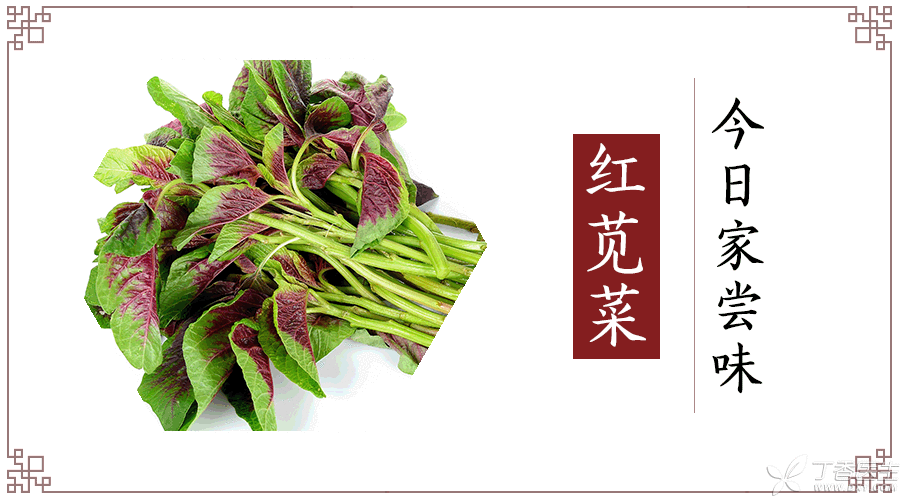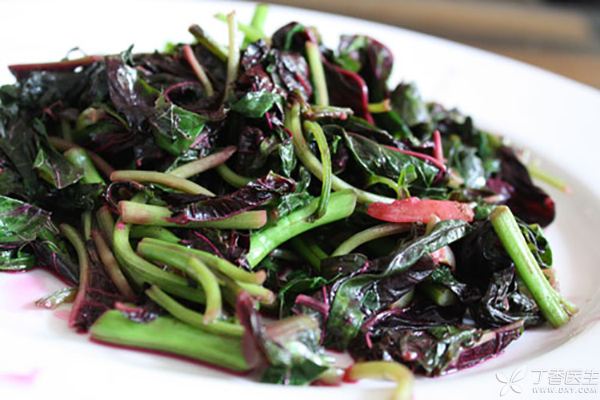
The scorching sun is scorching and the mouth is really tasteless. A seasonal vegetable on the home-made dining table has become the focus of the family’s chopsticks.
Red amaranth leaves only take tender leaves and tender rods, heat the pan with less oil, add garlic slices to stir-fry until the leaves wilt, then add salt and take out of the pan. This has become a good side dish with porridge.
The color of fried amaranth can be described as love by lovers and evil by evil. As a rare [red and green leafy vegetable], the red juice on the green stem is also given a special meaning-it is believed to be good for supplementing iron and blood.
Some friends like to grow vegetables on idle land in residential areas, roadsides or halfway up the mountain. Is the amaranth grown by themselves healthier?
Wild vegetables and vegetables are not divided into families.
As early as the Shang and Zhou Dynasties, our ancestors began to eat amaranth. In Zhu Luo’s “Herbal Medicine for Relief of Famine” of the Ming Dynasty, amaranth was listed as an important food.
In fact, amaranth is a very large family, including wild green amaranth, wrinkled fruit amaranth, concave head amaranth and other plants, which can basically be eaten as wild vegetables. Now our common amaranth in the market is only one of them, and has become an artificially grown vegetable.
Fortunately, the members of the amaranth family are relatively mild in nature and have no what toxicity or what peculiar smell. They can fulfill their duties whether they are making wild vegetables or garden vegetables.
As for the nutrition of amaranth, it is very common and moderate, with 89 grams of water, 2.8 grams of protein and 5.9 grams of carbohydrate in every 100 grams of amaranth.
It is worth noting that the dietary fiber of amaranth can reach 1.8 g/100g, which is also excellent in common green leafy vegetables (0.9 g/100g for Chinese cabbage). Dietary fiber is of great significance for promoting intestinal peristalsis and maintaining intestinal flora harmony. For people who are prone to constipation, amaranth is a quite good choice.
However, many friends may be more concerned about whether this red amaranth supplements iron and blood.
Although red is much, it does not enrich blood.
Some people like to talk about “supplementing shape with shape”, because red juice looks like blood, and red amaranth enriching blood has become a typical legend.
The iron content in amaranth is 2.9 mg/100g, which is the same as spinach and coriander. Although it is not low in green leafy vegetables, considering the low absorption and conversion rate of iron in plant foods, the iron supplement efficiency with amaranth is far less than that of eating meat. If iron deficiency is true, animal liver is a better choice, for example, the iron content in sheep liver is about 7.5 mg/100g.
The reason why amaranth is red is not because it is rich in iron, but because there are a lot of anthocyanins in its leaves.
Of course, smart readers who pay attention to Dr. Clove must be no stranger to anthocyanins that we have repeatedly mentioned.
Anthocyanin is a plant ingredient that is currently being stir-fried. In the publicity, Most of them are called “anti-cancer, anti-oxidation and anti-cardiovascular artifact”. Anthocyanins do have certain antioxidant functions, but the amount of anthocyanins we eat everyday is too small to function. In addition, there is still no clinical trial evidence on whether eating antioxidants is really beneficial to health.
However, on the other hand, it is better to have this anthocyanin than not-after all, it can add a bright color to our dining table and make us have a good mood to eat.

Be careful to grow poisonous vegetables
Will you grow vegetables on the idle land around?
Growing vegetables is actually a good activity. It can not only exercise your body, but also have fresh vegetables to eat. Why not?
But we must pay attention to the method of growing vegetables, In particular, pay attention to the use of soil. Many friends like to dig some silt from the river bank as fertilizer, or simply plant it on the river bank. The black silt can really make vegetables grow stronger, but there is a potential crisis behind the strength: although the silt in the river channel is rich in nitrogen, phosphorus and potassium, it also contains many pollutants, especially heavy metals.
Amaranth can absorb heavy metals and [accumulate] in the body, of which the heavy metal that is especially easy to absorb is [cadmium]. Each amaranth can accumulate 437.2 micrograms of cadmium. Cadmium can cause pathological changes in kidney, bone, lung and other organs. Never use seemingly [green] self-tillage and self-planting methods to grow poisonous vegetables.
In addition, the oxalic acid content in amaranth is relatively high (1.09%), so the total amount of consumption should be controlled. If you are not at ease, you can eat it cold after blanching, and you can also reduce the total amount of oxalic acid intake.
